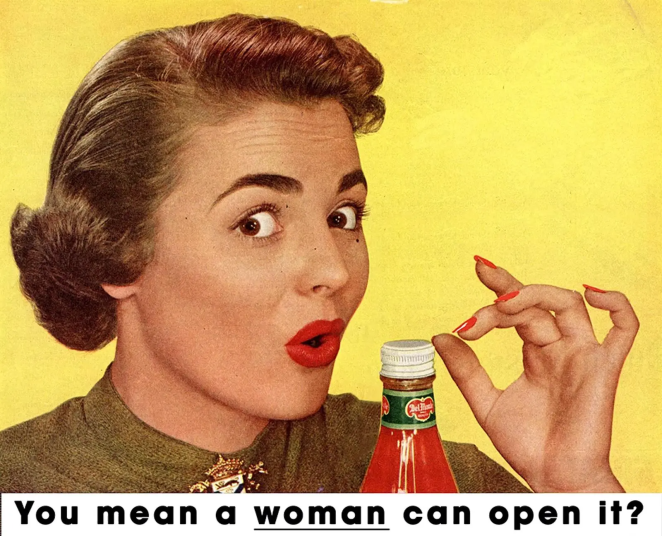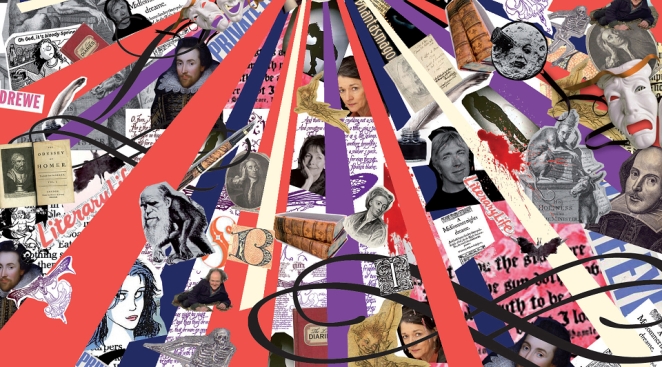Adland has not always been known as the bastion of diversity and inclusion it is today… mostly. Indeed, we only have to cast our minds back to the halcyon days of the Mad Men and the regrettable ads that now seem as outdated as blackface and crocs… mostly. As society progressed and diversified, however, adland did likewise and today, I’m going to do something I don’t do very often – celebrate it.
Advertising, you see, is a medium that can be so much more than just a platform for selling shit. It can also reflect the diversity and complexity of the world, by representing people from different backgrounds, identities, and perspectives. So, in the dying embers of diversity month, let’s take a few minutes to explore adland’s diverse history.
Back to the Start
Advertising, as we know it today, emerged in the late 19th and early 20th centuries and, as we all know, advertising has always been influenced by the social and cultural context of the time.
At that time, the culture was largely dominated by white, male, and Western perspectives and, as a result, advertising often reflected and reproduced the stereotypes, prejudices, and inequalities that existed in that society, especially towards people of colour, women, and other marginalised groups.

Early advertising also tended to portray an idealised and unrealistic image of life, by emphasising beauty, wealth, happiness, and success, and by excluding or ignoring the realities and challenges of many people.
This is one area of the sector that hasn’t really changed in over 100 years. In many other ways, however, there has been a subtle evolution of values that started in the mid-20th century, partly as a result of political movements such as civil rights, feminism and the anti-war sentiment that followed the Vietnam war.
These movements challenged the status quo and demanded more representation, recognition, and respect for people from different backgrounds, identities, and perspectives. Advertising responded to these demands by featuring more diverse and inclusive images and messages, as well as by targeting more diverse and niche audiences.
Early Diversity Pioneers
The “I’d Like to Buy the World a Coke” campaign by Coca-Cola in 1971, which featured a multicultural group of young people singing together in harmony, and which aimed to promote peace and unity in a turbulent time.
The “You’ve Come a Long Way, Baby” campaign by Virginia Slims in 1968, which celebrated the achievements and liberation of women, and which appealed to the emerging market of female smokers.
The “Black is Beautiful” campaign by Johnson Products in 1969, which promoted the beauty and pride of African American women, and which introduced the first line of hair and skin care products specifically designed for them.
The “We All Laugh in the Same Language” campaign by Benetton in 1989, which featured children from different ethnicities and cultures laughing together, and which aimed to convey a message of tolerance and diversity.
The Challenges and Controversies of Diversity in Advertising
Despite the progress and achievements of diversity in advertising, there are still many challenges and controversies that persist in the industry. Some of the main issues include:
- The tokenism and stereotyping of diverse groups, which means using them as symbols or props, rather than as authentic and complex individuals, and which often reinforces negative or simplistic views of them.
- The whitewashing and erasure of diverse groups, which means altering or omitting their appearance, culture, or history, in order to make them more palatable or acceptable to the mainstream audience, and which often denies or diminishes their identity and contribution.
- The appropriation and exploitation of diverse groups, which means using their elements, such as their style, music, or language, without their consent or credit, and which often benefits the dominant group at the expense of the marginalised group.
- The backlash and resistance from some segments of society, who perceive diversity in advertising as a threat or an imposition, and who often express their hostility or criticism towards it.
The Ads That Faced a Backlash
The “America the Beautiful” campaign by Coca-Cola in 2014, which featured people from different backgrounds and cultures singing the patriotic song in different languages, and which sparked a backlash from some people who accused the company of being unpatriotic and un-American.
The “Just Do It” campaign by Nike in 2018, which featured Colin Kaepernick, the former NFL player who protested against racial injustice and police brutality by kneeling during the national anthem, and which provoked a boycott and a backlash from some people who accused the company of being disrespectful and divisive.
The “Be More Human” campaign by Reebok in 2015, which featured Gigi Hadid, the model and celebrity, wearing a hijab, a headscarf worn by some Muslim women, and which caused a controversy from some people who accused the company of being insensitive and inappropriate.
The “The World Needs More Colour” campaign by SheaMoisture in 2017, which featured women from different ethnicities and hair types, but which excluded the African American women who were the core and loyal customers of the brand, and which caused a backlash from some people who accused the company of being disloyal and alienating.
The Future of Diversity in Advertising
The future of diversity in advertising is uncertain, but also promising. There are many opportunities and challenges that lie ahead, as the world becomes more diverse, complex, and connected.
Advertising will have to adapt and evolve, by being more aware, sensitive, and responsive to the needs, preferences, and expectations of the diverse and dynamic audiences. Advertising will also have to be more creative, innovative, and authentic, by telling more diverse and inclusive stories, and by creating more diverse and inclusive experiences.
Some of the trends that could have a direct impact in the coming years include:-
- The use of artificial intelligence and data analytics, which can help advertisers understand and predict the behaviour and preferences of the diverse and niche audiences, and which can help them create more personalised and relevant content and campaigns.
- The use of social media and digital platforms, which can help advertisers reach and engage with the diverse and global audiences, and which can help them create more interactive and participatory content and campaigns.
- The use of virtual reality and augmented reality, which can help advertisers create more immersive and realistic content and campaigns, and which can help them showcase and celebrate the diversity and complexity of the world.
- The use of influencers and advocates, who are people with a large and loyal following on social media or other platforms, and who can help advertisers promote and endorse their products and services, and who can help them connect and communicate with the diverse and influential audiences.

Shane Willis
Diversity is more than just a matter of representation, it’s also a matter of respect, recognition, and empowerment and should be seen as a responsibility for advertisers trying to shape a better world. Of course, the last 80 years have been a little up and down in place, but the overall trend is very much on the up. So, lets keep that going, shall we?




